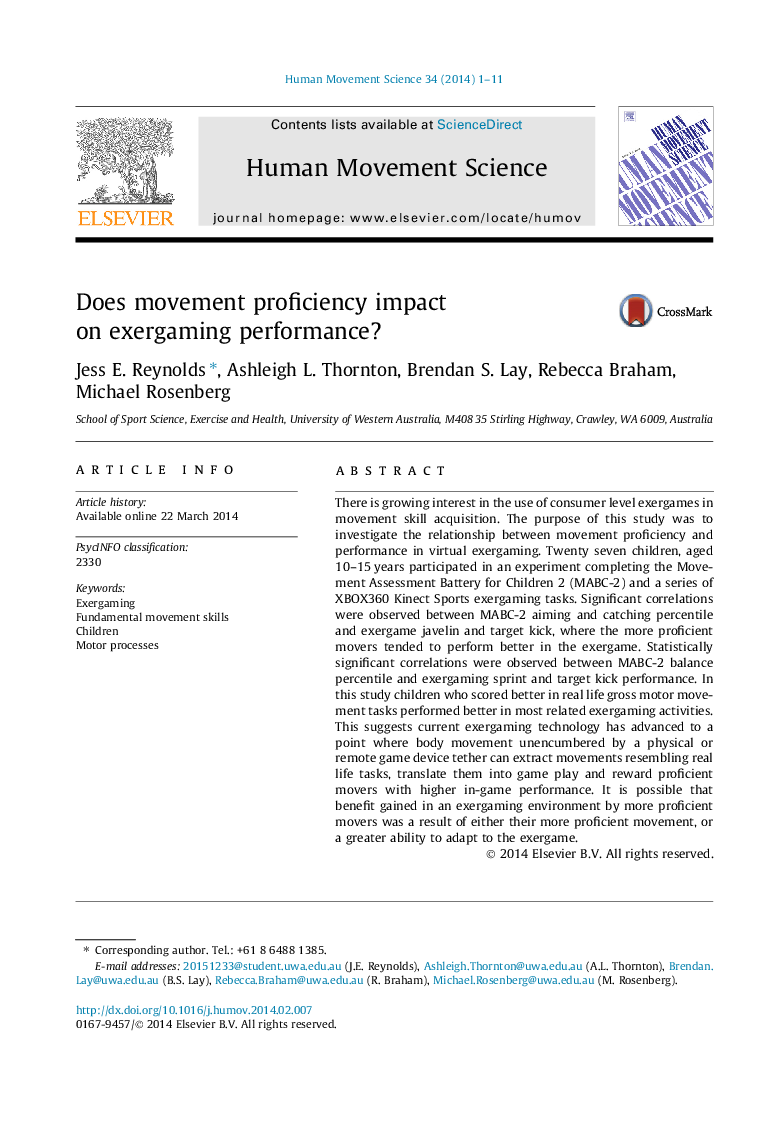| Article ID | Journal | Published Year | Pages | File Type |
|---|---|---|---|---|
| 928406 | Human Movement Science | 2014 | 11 Pages |
•There is growing interest in the use of exergames in movement skill acquisition.•Proficient real life movers scored higher in most related exergaming activities.•Exergames may be a useful source of augmented feedback during skill acquisition.
There is growing interest in the use of consumer level exergames in movement skill acquisition. The purpose of this study was to investigate the relationship between movement proficiency and performance in virtual exergaming. Twenty seven children, aged 10–15 years participated in an experiment completing the Movement Assessment Battery for Children 2 (MABC-2) and a series of XBOX360 Kinect Sports exergaming tasks. Significant correlations were observed between MABC-2 aiming and catching percentile and exergame javelin and target kick, where the more proficient movers tended to perform better in the exergame. Statistically significant correlations were observed between MABC-2 balance percentile and exergaming sprint and target kick performance. In this study children who scored better in real life gross motor movement tasks performed better in most related exergaming activities. This suggests current exergaming technology has advanced to a point where body movement unencumbered by a physical or remote game device tether can extract movements resembling real life tasks, translate them into game play and reward proficient movers with higher in-game performance. It is possible that benefit gained in an exergaming environment by more proficient movers was a result of either their more proficient movement, or a greater ability to adapt to the exergame.
